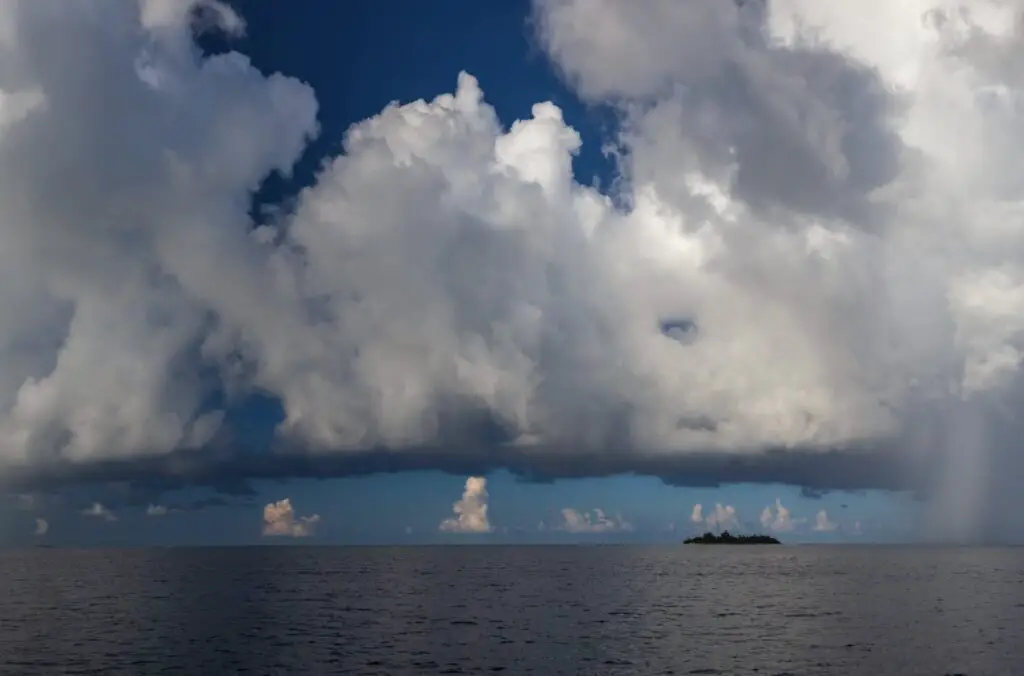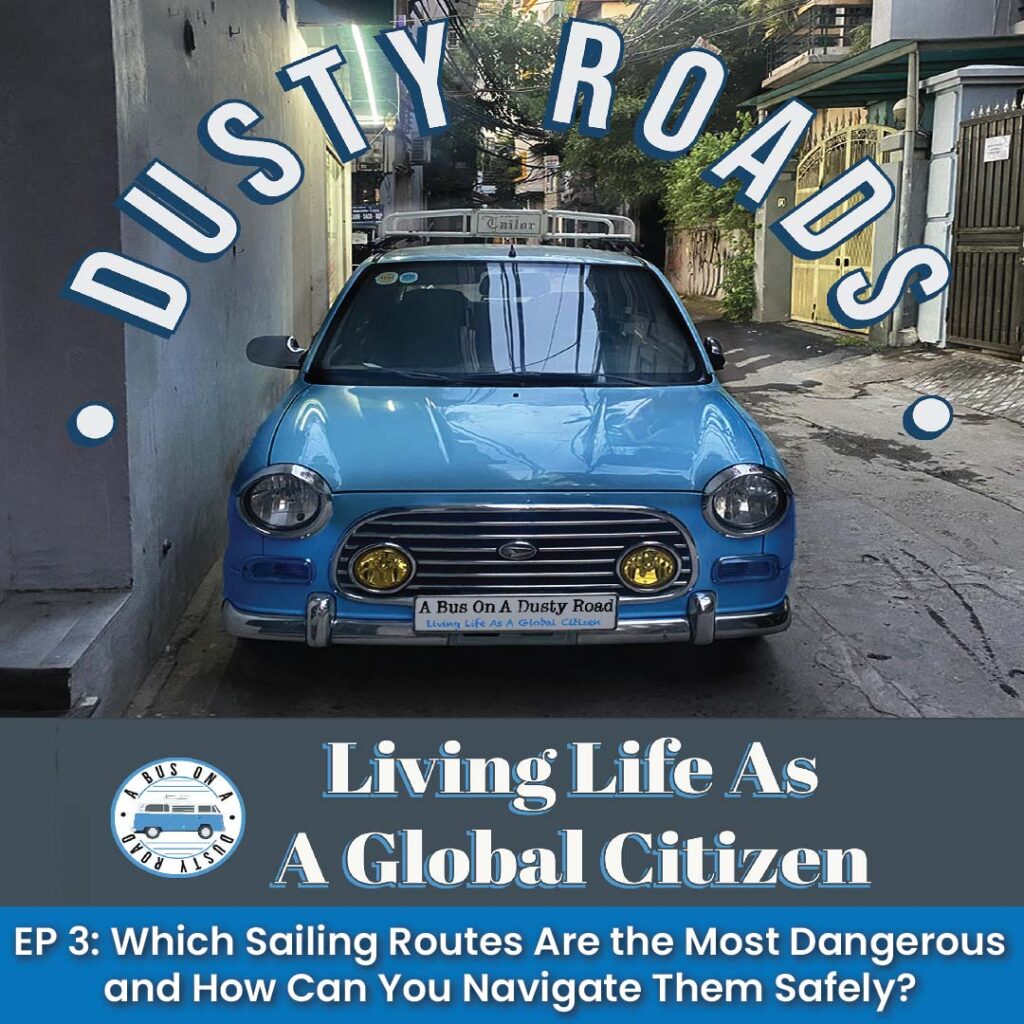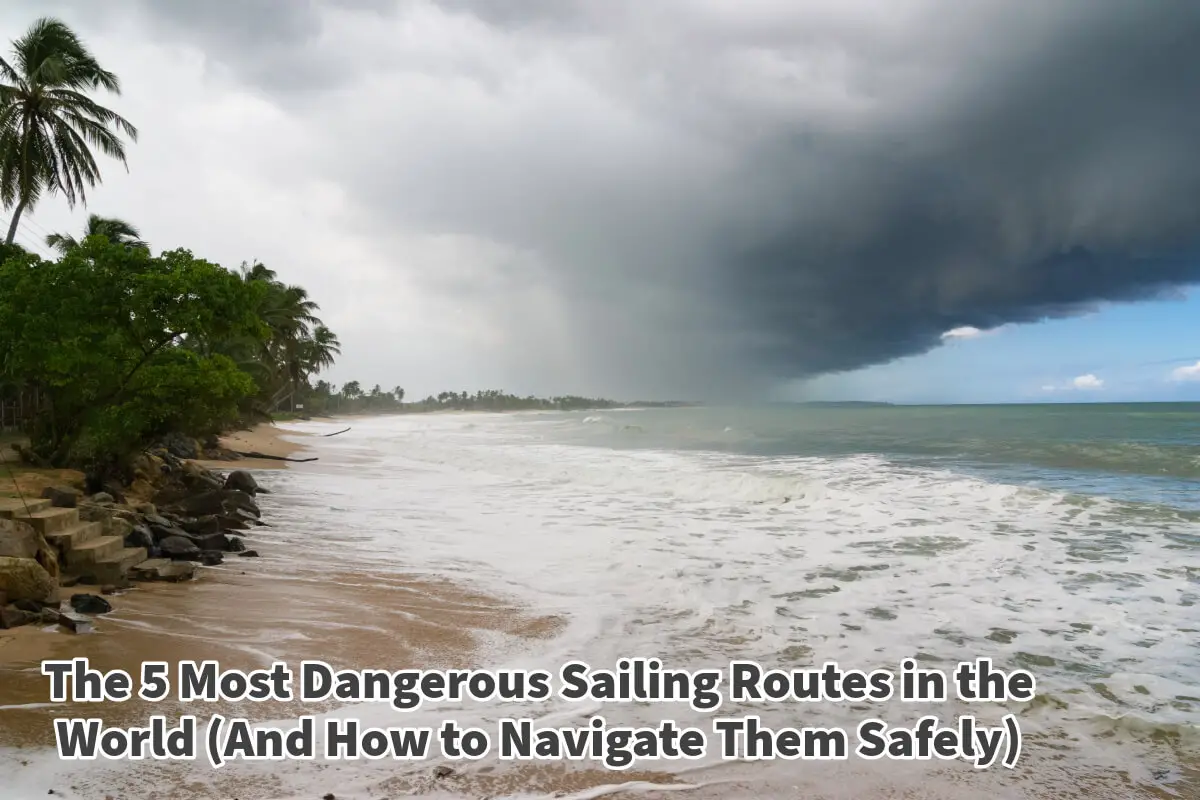Sailing has always blended adventure, skill, and respect for nature’s unpredictability. This is one reason why I love sailing so much.
While the ocean offers breathtaking beauty and tranquility, some sailing routes are dangerous, testing even the most seasoned sailors. From treacherous currents to relentless storms, these routes require meticulous planning, unwavering vigilance, and a deep understanding of the sea.
Table of Contents
- 5 Deadliest Sailing Routes in the World (And How to Conquer Them Safely)
- 1. Cape Horn, Chile: The Sailor’s Graveyard
- 2. The Gulf Stream, North Atlantic Ocean
- 3. The Bay of Biscay, France/Spain
- 4. The Drake Passage, Antarctica
- 5. The Indian Ocean Monsoon
- General Tips for Navigating Dangerous Sailing Routes
- Related Questions
5 Deadliest Sailing Routes in the World (And How to Conquer Them Safely)
While the ocean captivates with its serene beauty and boundless horizons, specific sailing routes are perilous, challenging even the most experienced mariners. From unpredictable currents to fierce storms, these treacherous paths demand careful preparation, constant alertness, and a profound respect for the power of the sea.
Read on as we explore the world’s five most dangerous sailing routes, uncovering what makes them perilous and offering practical tips for navigating them safely.
1. Cape Horn, Chile: The Sailor’s Graveyard

Why It’s Dangerous
Cape Horn, located at the southern tip of South America, is infamous for its unpredictable weather, massive waves, and strong winds. Known as the “Sailor’s Graveyard,” this route connects the Atlantic and Pacific Oceans, creating a fierce confluence of waters. Icebergs, strong currents, and towering waves (sometimes exceeding 30 feet) add to the danger.
Tips for Safe Navigation
- Timing is Everything: The best time to sail around Cape Horn is during the summer (December to February) when conditions are relatively milder.
- Monitor Weather Forecasts: Stay updated on weather conditions to avoid sudden storms. Modern satellite navigation tools are invaluable.
- Prepare for Emergencies: Equip your vessel with reinforced sails, life rafts, and emergency signaling devices.
- Sail with Experience: This route is not for novices. Consider hiring a local guide or joining a flotilla for additional support.
2. The Gulf Stream, North Atlantic Ocean

Why It’s Dangerous
The Gulf Stream is a powerful ocean current stretching from Florida to the North Atlantic. It’s a vital trade and travel route but notorious for its fast-moving waters, which can reach speeds of up to five knots. The current often clashes with cold air masses, leading to sudden, violent storms and turbulent seas.
Tips for Safe Navigation
- Avoid Storm Season: Hurricane season in the Atlantic (June to November) can amplify the Gulf Stream’s dangers. Aim to sail during calmer months.
- Watch for Squalls: Sudden storms are common. Keep a close eye on radar and weather updates.
- Stay Prepared for Choppy Waters: Adjust your sails and maintain a steady course to minimize the impact of waves.
- Know Your Route: Understand how the Gulf Stream flows and plan your route to either ride its currents or avoid its most substantial sections.
3. The Bay of Biscay, France/Spain

Why It’s Dangerous
The Bay of Biscay, off the coasts of France and Spain, is infamous for its rough seas and powerful storms, particularly in winter. Shallow waters exacerbate the size and intensity of waves, making the bay a challenge even for experienced sailors. Additionally, its location makes it a hub for maritime traffic, increasing the risk of collisions.
Tips for Safe Navigation
- Choose the Right Season: Summer months (June to August) generally offer calmer seas, while winter should be avoided.
- Study Tidal Patterns: Understanding the bay’s complex tides is essential for safe navigation.
- Prepare for Heavy Traffic: Use AIS (Automatic Identification System) to track and avoid large vessels.
- Reinforce Your Vessel: Ensure your boat can handle large waves and strong winds.
4. The Drake Passage, Antarctica

Why It’s Dangerous
The Drake Passage, between South America and Antarctica, is one of the most unforgiving sailing routes in the world. Known for its extreme weather and massive swells, it’s where the Atlantic, Pacific, and Southern Oceans converge. The passage’s unpredictable winds, known as the “Furious Fifties,” and icy waters demand the utmost caution.
Tips for Safe Navigation
- Prepare for the Worst: The weather can change in an instant. Equip your vessel with advanced navigation and communication systems.
- Layer Up: Extreme cold is a significant challenge. Ensure your crew has proper cold-weather gear to prevent hypothermia.
- Hire an Expert Crew: If you’re unfamiliar with polar sailing, consider traveling with experienced Antarctic guides.
- Plan for Icebergs: Radar and thermal imaging systems are essential for detecting icebergs and avoiding collisions.
5. The Indian Ocean Monsoon

Why It’s Dangerous
The Indian Ocean is a vital trade route but presents unique challenges due to its seasonal monsoon winds. The southwest monsoon (June to September) brings strong winds and heavy rains, while the northeast monsoon (November to February) can result in sudden squalls. Additionally, piracy in certain areas can pose a significant risk.
Tips for Safe Navigation
- Sail During the Transition Periods: Avoid peak monsoon seasons and sail during calmer transitional months.
- Stay Clear of High-Risk Areas: Research piracy hotspots and plan your route accordingly.
- Invest in Security Measures: If sailing near piracy-prone areas, consider onboard security equipment like radar, secure cabins, and distress signaling devices.
- Monitor Weather Patterns: Monsoons can be unpredictable. Keep updated on wind and storm forecasts through reliable sources.
General Tips for Navigating Dangerous Sailing Routes
Here are some general tips for navigating some of the world’s most dangerous routes.
Prepare Your Vessel:
Ensure your boat is in top condition, with reinforced sails, sturdy rigging, and functioning navigation and communication systems.
Invest in Safety Gear:
Stock up on life jackets, rafts, emergency beacons, and medical supplies.
Learn Weather Patterns:
Understanding the unique weather characteristics of each route is crucial to avoiding trouble.
Stay Informed:
Use modern technology like GPS, radar, and AIS to monitor your position and nearby vessels.
Build Experience:
Practice in less challenging waters before attempting these perilous routes.
Travel with a Crew:
Dangerous routes are best navigated with an experienced team to share the responsibilities and handle emergencies.
The world’s most dangerous sailing routes offer breathtaking beauty and unparalleled adventure but demand respect and preparation.
Cape Horn’s ferocity, the Gulf Stream’s unpredictability, and the Drake Passage’s icy challenges test sailors like no other waters. By equipping yourself with the proper knowledge, tools, and precautions, you can navigate these treacherous routes safely while experiencing the thrill of conquering some of the most formidable oceans on Earth.
If you’re up for the challenge, let these routes inspire your next great maritime adventure—but always remember: safety first. Whether you’re chasing the horizon or seeking the thrill of the open sea, respect for nature and preparation are the keys to a successful journey.
Listen To Our Podcast About
Which Sailing Routes Are the Most Dangerous—and How Can You Navigate Them Safely? Below or By clicking here.

At A Bus On A Dusty Road, we talk about everything about travel, life, sailing, and ex-pat living. We are all about “Living Life As A Global Citizen.” We explore social, cultural, and economic issues and travel.
We would love to have you be part of our community. Sign up for our newsletter to keep up-to-date by clicking here. If you have any questions, you can contact me, Anita, by clicking here.
Listen to our Podcast called Dusty Roads. You can find it on all major podcast platforms. Try out listening to one of our podcasts by clicking here.
Subscribe to our A Bus On A Dusty Road YouTube Channel filled with great videos and information by clicking here.
Related Questions
All About Sailing In The Philippines
The Philippines has long been a sailors’ paradise for cruising and learning to sail a boat. For 7000 islands, there are many places that you can explore within the Philippines. It can be an area that can hit many typhoons, so to cruise or sail the Philippines, you need to understand the best time to go there.
By clicking here, you can discover All About Sailing In The Philippines.
How Much Wind Is Too Much For A Beginner Sailor?
For a beginner sailor, the wind is usually recommended to be under 10 knots. Those who are more experienced or with a larger boat can consider going up to 12 knots of wind. A knot is not the same as miles per hour or kilometers per hour but is faster than these measurements.
By clicking here, you can discover How Much Wind Is Too Much For A Beginner Sailor?
No Experience Sailing, 6 Tips To Get Started
If you are going to take up sailing, you first must get on a boat and find out if sailing is suitable. The best sailors can handle their boats in all kinds and types of weather. Find a class that you can join and get certified. Sailing requires knowledge and skill. Find yourself a sailing community that you can be part of.
By clicking here, you can discover No Experience Sailing, 6 Tips To Get Started.

